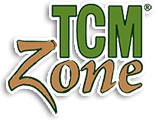Alleviating Bi Syndrome (Bi Zheng) During The Winter

By Xiyuan “Alex” Qiu, L.Ac.
As we transition from the crisp, autumn days to the colder, winter months, it’s essential for acupuncturists and herbalists to be well-prepared to help their patients suffering from Bi Syndrome, particularly Cold Damp Bi Syndrome. This specific type of Bi Syndrome can worsen during the winter, leading to discomfort and pain for those affected. Traditional Chinese Medicine (TCM) offers a wealth of tools and techniques to alleviate these symptoms and help your patients stay comfortable during the colder season. In this blog, we’ll explore how TCM can effectively address Cold Damp Bi Syndrome in winter.
Understanding Cold Damp Bi Syndrome
Before we delve into treatment options, let’s briefly recap what Cold Damp Bi Syndrome is and why it can be problematic in winter. In TCM, Bi Syndrome refers to various types of musculoskeletal disorders characterized by pain, stiffness, and discomfort. Cold Damp Bi Syndrome, as the name suggests, involves the invasion of cold and dampness into the body’s meridians and joints, leading to symptoms such as joint pain, muscle stiffness, and a sensation of heaviness.
Cold Damp Bi Syndrome tends to worsen during winter due to the following factors:
- Cold Weather: Cold temperatures exacerbate the invasion of cold into the body, making patients feel more pain and discomfort in their joints and muscles.
- Dampness: Winter often comes with increased humidity, which can exacerbate dampness in the body and worsen symptoms.
- Reduced Physical Activity: People tend to be less active during the winter months, leading to stagnation of Qi and blood circulation, making the symptoms of Bi Syndrome more pronounced.
- Improper clothing: Patients may not be covering their head, neck or feet with enough warmth. This can allow for invasion of cold.
Addressing Cold Damp Bi Syndrome in Winter
Herbal Medicine
Herbal remedies are a cornerstone of TCM treatment. In the case of Cold Damp Bi Syndrome, herbs that warm the body and dispel cold and dampness are recommended. Common herbs include:
- Rou Gui (Cinnamon Bark): Warms the channels and dispels cold.
- Du Huo (Pubescent Angelica Root): Disperses cold, removes dampness, and alleviates pain.
- Yan Hu Suo (Corydalis): Moves qi within the blood.
These herbs can be used in decoctions, topical liniments, or as part of patent formulas, tailored to the patient’s specific pattern.
Acupuncture
Acupuncture is a highly effective therapy for managing Bi Syndrome. In winter, acupuncturists can focus on specific points to dispel cold and dampness, promote circulation, and alleviate pain. Common acupuncture points for Cold Damp Bi Syndrome include:
- BL23 (Shenshu): Regulates water passages and strengthens the lower back
- GB34 (Yanglingquan): Clears dampness, strengthens the tendons, and alleviates pain
- ST36 (Zusanli): Invigorates the spleen, eliminates dampness, and promotes circulation
Moxibustion
Moxibustion involves the application of heat from burning moxa (dried mugwort) to specific acupuncture points. It’s particularly useful for warming the meridians and dispelling cold. Moxa can be applied to points like BL23, GB34, and SP9 (Yinlingquan) to help address Cold Damp Bi Syndrome during winter.
Diet and Lifestyle Recommendations
Advise your patients to make appropriate dietary and lifestyle changes to complement their TCM treatments. Encourage them to consume warming foods, such as ginger, garlic, and cinnamon, and to stay hydrated. It’s a great introduction for soups, stews or congee. Additionally, gentle, low-impact exercises like Tai Chi and Qi Gong can help maintain joint flexibility and circulation during the winter months. Remind clients to bundle up keeping their neck, shoulders and head covered and their feet warm.
As winter sets in, it’s crucial for acupuncturists and herbalists to be well-prepared to help patients suffering from Cold Damp Bi Syndrome. Traditional Chinese Medicine offers a comprehensive approach to address the root causes of this condition, providing effective relief from pain, stiffness, and discomfort. By combining herbal remedies, acupuncture, moxibustion, and dietary/lifestyle recommendations, you can help your patients maximize their comfort and well-being during the winter months, allowing them to embrace the season with ease and vitality.
*The information provided here is for healthcare professional practitioners only. These statements have not been evaluated by the Food and Drug Administration. This product is not intended to diagnose, treat, cure or prevent any disease.

